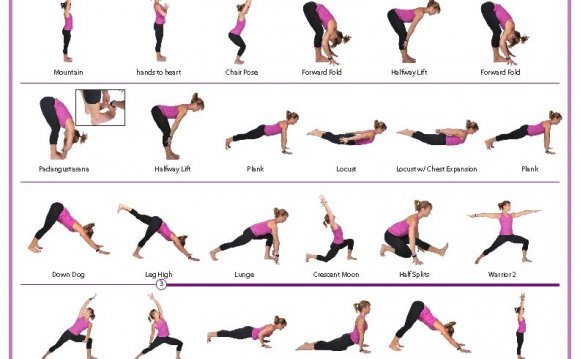
There are more people then ever interested in learning about meditation these days. In a world where 40-hour work weeks are becoming obsolete in favor of 60- and 70-hour work weeks, when people are being laid off and fired and those who remain are expected to pick up the slack, and with digital interconnectedness making it easier then ever to access information that previously could have been impossible to find, it’s no wonder people are clamoring for ANYTHING that will help them feel more focused, calm, and at peace.
In the classical 8-limbed yoga path, the last few steps are the ones we must look to if we really want to reap the benefits of focus, concentration, and meditation.
Where to start and how to progress
In an asana, or posture, practice, you may hear instructors talk about focus and concentration. There’s a Sanskrit term called drishti that refers to a single-pointed focus that can be helpful in balancing postures. The idea is that you look at one point that is unmoving and focus all of your attention and awareness to that one point so that your mind and other external stimulus can’t distract you.
As a quick review, the 8-limbed yoga path contains the following steps:
- Yamas (how you interact with the world around you)
- Niyamas (how you interact with your self)
- Asana (posture)
- Pranayama (breath)
- Pratyahara(withdrawal of the senses)
- Dharana (concentration)
- Dhyana (meditation)
- Samadhi (enlightenment)
Relaxation
Asana, Pranayama and Pratyahara are all helpful practices to engage to help us relax. But relaxing isn’t meditating. There is a difference between your body being relaxed and your mind being relaxed and there is an even more subtle layer between your mind being calm and your mind being attached to your experiences.
It is important that we incorporate relaxation into our yoga practice because we need to be able to relax the body and mind before we’re able to access more subtle layers of our Self. If we are not relaxed, we’ll have a really hard time focusing. And without focus, it will be impossible to withdraw our senses inward. If we can’t withdraw our sense inward, we’ll have a hard time ever grasping meditation.
Everyone relaxes in different ways, but posture can be effective in achieving a relaxed state. As long as the posture is easeful and not mixed with too much effort and power, posture practice can leave us with a relaxed body and mind.
Calming activities like reading, watching TV, massage, that is more wholistic and looks beyond physical postures.
Concentration
Once you do find relaxation, which by the way, can be very challenging for some of us (like me), you’re able to begin a practice in concentration (which is interchangeable with focus, as referenced above, but here, I’m talking about a more formal practice of concentrating). I remember growing up concentration was my favorite card game – the one where all the cards are arranged facedown and you had to flip over two cards to see if you get a match. Any practice that helps work your brain can be a concentration exercise.
Keeping your mind focused on one thing is a concentration exercise. Focusing on an object or on your breath can be a practice in concentration. Focusing on a mantra can be a practice in concentration or listening to the same sound over and over again can help you focus.
This is the one place where people get the most confused with the difference between focus/concentration and meditation. Sitting on a cushion and focusing on your breath is not meditation. It’s concentration.
This isn’t to say it’s not an extremely helpful practice, because we all need more brain training to help us focus and single-task so that we can remain more present in every moment. And this is a step on the path toward meditation, but it’s not quite meditation yet.
In yoga, you reach meditation when you are able to sustain concentration on one object for so long that you move beyond the object, sound, image, mantra, etc. that you’re focusing on.
Meditation
Hold on for a moment because I’m about to get completely esoteric.
Meditation can be frustrating because we never really know if we’re doing it right. We sit again and again hoping something will happen and become more and more frustrated that we can’t “quiet our mind.” We ask ourselves the question more then once “why am I sitting here looking like a fool and pretending that I can do this thing day after day with no result?”









